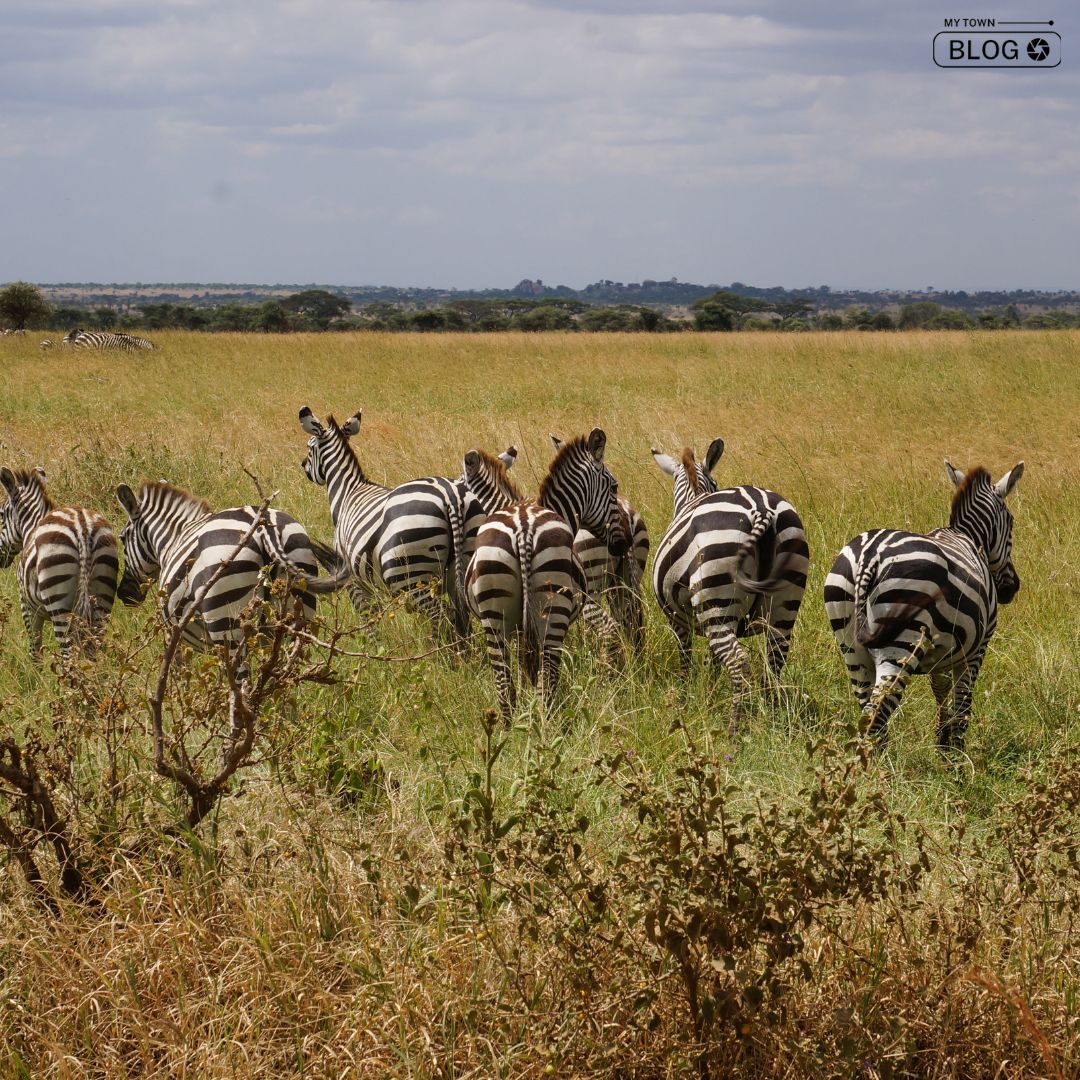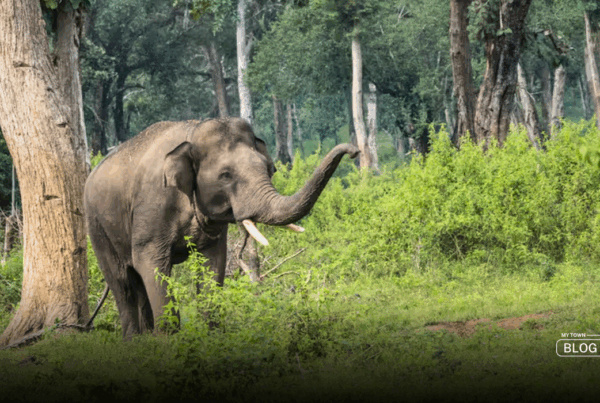India, a land of vibrant landscapes and diverse ecosystems, is home to an incredible array of wildlife sanctuaries that beckon both nature enthusiasts and curious travellers. From the awe-inspiring roar of the Bengal tiger to the graceful flight of exotic birds, these sanctuaries offer a glimpse into the wonders of the natural world. In this article, we embark on a journey to uncover the Top Wildlife Sanctuaries in India, delving into their unique offerings, conservation efforts, and captivating tales that make them a true treasure trove of biodiversity.
Jim Corbett National Park, Uttarakhand
Nestled in the picturesque landscape of Uttarakhand, Jim Corbett National Park stands as a testament to India’s dedication to preserving its natural heritage. Named after the legendary conservationist Jim Corbett, this sanctuary is a haven for Bengal tigers and various other wildlife species. The thrill of catching a glimpse of these majestic creatures in their natural habitat is an experience like no other.
- Location: Nainital District, Ramnagar, Uttarakhand, 244715
Ranthambore National Park, Rajasthan
In the heart of Rajasthan lies Ranthambore National Park, a sanctuary that seamlessly weaves together history and wildlife. Imagine the majestic backdrop of ancient ruins and imposing forts as the stage for the regal tigers that rule this domain. The park’s historic ambiance adds an extra layer of enchantment to the exhilarating wildlife encounters it offers.
- Location: Sawai Madhopur, Rajasthan, India
Kaziranga National Park, Assam
Venturing to the northeastern part of India, we encounter Kaziranga National Park, a testament to the country’s commitment to safeguarding its unique wildlife. Known for its remarkable population of one-horned rhinoceroses, this sanctuary is a conservation success story. The sight of these prehistoric giants grazing amidst the tall grasses is a sight to behold.
- Location: Kanchanjuri, Assam, 784177
Bandhavgarh National Park, Madhya Pradesh
Madhya Pradesh’s Bandhavgarh National Park boasts one of the highest densities of Bengal tigers in India. This sanctuary, with its lush forests and rugged terrain, presents an intriguing realm where predators and prey engage in the ancient dance of survival. The stories of each individual tiger’s journey create a tapestry of wilderness narratives.
- Location: Tala, Bandhavgarh National Park, Madhya Pradesh, 484661
Kanha National Park, Madhya Pradesh
As the sun sets over Madhya Pradesh’s Kanha National Park, it’s easy to see how this breathtaking landscape served as Rudyard Kipling’s inspiration for “The Jungle Book.” The enchanting forests, sprawling meadows, and meandering rivers set the stage for a captivating wildlife spectacle. From tigers to barasingha deer, each resident of Kanha plays a vital role in maintaining the park’s delicate balance.
- Location: District Balaghat, Madhya Pradesh
Sundarbans National Park, West Bengal
A unique gem among India’s wildlife sanctuaries, Sundarbans National Park in West Bengal is a paradise where the forest meets the sea. Its mangrove ecosystem is home to the elusive Bengal tiger, which has adapted remarkably to its watery surroundings. Navigating the labyrinthine waterways in search of these striped predators is an adventure in itself.
- Location: Gosaba, West Bengal, 743370
Periyar Wildlife Sanctuary, Kerala
Kerala’s Periyar Wildlife Sanctuary offers a tranquil refuge in the heart of the Western Ghats. Amidst mist-covered hills and serene lakes, diverse species, including elephants and gaurs, roam freely. The sanctuary’s conservation efforts and the opportunity to witness elephants bathing in the lake make it a must-visit for nature lovers.
- Location: Periyar Tiger Reserve, Thekkady, District Idukki, Kerala
Sariska Tiger Reserve, Rajasthan
Sariska Tiger Reserve, located in the Aravalli range of Rajasthan, offers a diverse landscape that ranges from grasslands to dry deciduous forests. The sanctuary’s revival as a tiger habitat showcases India’s commitment to conservation. While the elusive big cats steal the limelight, Sariska is also home to a variety of wildlife and avian species.
- Location: Alwar district, Rajasthan, India
Gir National Park, Gujarat
Gir National Park in Gujarat stands as the last refuge of the critically endangered Asiatic lion. This sanctuary’s success story is a testament to concerted efforts towards species conservation. As you traverse the rugged terrain, encountering lions, leopards, and myriad other species, you witness the delicate balance of nature at play.
- Location: Gir National Park, Talala Gir, Gujarat, 362135
Pench National Park, Madhya Pradesh
Pench National Park, straddling the states of Madhya Pradesh and Maharashtra, is a place where fiction and reality blur. The park’s varied landscapes, immortalised in Rudyard Kipling’s “The Jungle Book,” are home to an astounding diversity of flora and fauna. Observing the park’s inhabitants against this literary backdrop is a truly magical experience.
- Location: District Seoni and Chhindwara, Madhya Pradesh
Conclusion
India’s wildlife sanctuaries, each a symphony of life and landscapes, offer a glimpse into the country’s rich natural heritage. From the regal tigers of Ranthambore to the graceful rhinoceroses of Kaziranga, these sanctuaries stand as beacons of conservation and exploration. As visitors, we become part of their ongoing stories, contributing to their preservation while being captivated by the beauty and diversity that define them.
FAQs
What are wildlife sanctuaries, and why are they important?
Wildlife sanctuaries are designated areas aimed at conserving and protecting various species of animals and plants. They contribute to biodiversity conservation, maintain ecological balance, and offer opportunities for scientific research and education.
What kinds of wildlife can I expect to see in these sanctuaries?
These sanctuaries are home to a wide variety of wildlife, including mammals, birds, reptiles, and more. Depending on the sanctuary, you may encounter animals like tigers, elephants, rhinoceroses, lions, and various bird species.
Are these wildlife sanctuaries open to the public for visits?
Yes, many wildlife sanctuaries are open to the public for educational and recreational visits. However, visiting rules and guidelines may vary, so it’s advisable to check with the respective authorities before planning a visit.
Are guided tours available at these wildlife sanctuaries?
Many wildlife sanctuaries offer guided tours led by knowledgeable naturalists or park rangers. These tours provide insights into the local ecosystems, wildlife behaviour, and conservation efforts.
Are accommodations available within or near these wildlife sanctuaries?
Yes, several sanctuaries offer accommodation options, ranging from forest guesthouses to eco-resorts. It’s recommended to book your stay in advance and inquire about available facilities.
Are there any restrictions on bringing food or drinks into these sanctuaries?
Many wildlife sanctuaries have designated picnic areas where you can enjoy food and drinks. However, it’s crucial to adhere to guidelines to prevent littering and to ere that food doesn’t attract unwanted wildlife.








